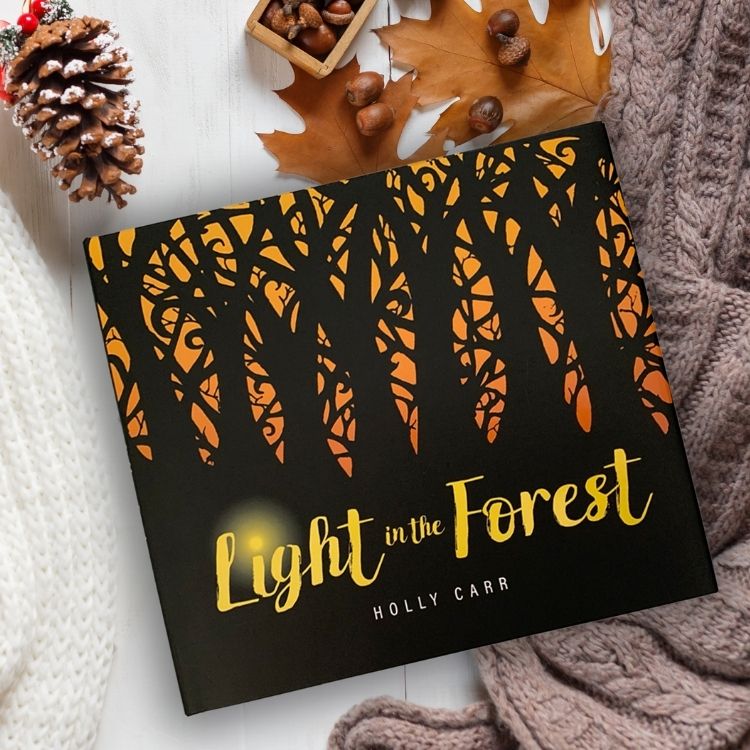Nature, Art, and Comfort With Artist Holly Carr

By Phoebe Jenner
Light in the Forest, Nova Scotia artist Holly Carr’s new picture book, was designed as a literary nightlight for children who face anxiety once their parents say goodnight. Featuring a selection of silk paintings of various woodland animals, Carr cleverly juxtaposes frightening images with ones that show the harmlessness and comfort of the very creatures the child was scared of a page earlier. The mantra repeated throughout is “Do not be afraid. I am not afraid,” reminding children that just as their imagination can make them fearful, their own mind can calm them down.
Carr’s inspiration for her work was her own personal experiences with nighttime fears; like many children, her son struggled with anxiety when left in the dark. Carr drew upon his love of woodland creatures and created a safe space for him to enter before going to bed, one that would, she hoped, remind him that the dark shapes he was afraid of in the night were actually familiar and harmless and that animals could appear as both frightening and lovable. Woodland animals and natural scenes have always been important to Carr, who has lived on both coasts of Canada and travelled to every province. Her father-in-law, the esteemed naturalist and artist Robert Bateman, accompanied her and her husband on nature trips across Canada, and it was these trips that inspired her art. “The natural world ends up in my paintings,” remarked Carr, “except that I like whimsy, so a lot of the time there will be anthropomorphized [animals] or I have a little bit of fun with them.”
Along with artists varying from Frida Kahlo and Georgia O’Keeffe to Canada’s beloved Mr. Dressup, Carr has been inspired by her father-in-law, with whom she shared a studio for a year while living on Salt Spring Island in British Columbia. “I was always painting animals of some sort, in my own way,” Carr explained. “A lot of the time, I would see one and think about it, and paint my interpretation.” She describes it as looking at something, looking away, and then finding the essence of the animal. She relates that Bateman would occasionally comment, “You know birds’ necks don’t bend that way?” but Carr embraces both surrealism and naturalism in her paintings. She often uses the nature found in her own backyard as inspiration, and describes creating as “making up a forest out of my imagination as I draw, and that’s where the whimsy and magic come in.”

Although Light in the Forest is a picture book, Carr, who frequently collaborates with musicians to create multimedia works, has also turned it into a piece of performance art complete with a combination of original and classical compositions and dancers wearing costumes designed by Carr herself. Every animal represented in Light in the Forest is accompanied by two pieces of music: one to represent the animal’s more terrifying form and one to represent its peaceful one, which creates an audiovisual soundscape in which the audience is immersed.
When asked about what she wanted parents and children to gain from Light in the Forest, Carr said simply, “The first thing would be no matter how tough it gets, you can get through it. It was more about creating a mantra for kids to say. Ultimately, at the end of the book, you’re reminded that there’s light in the forest, things are going to be okay. As parents, that’s what we do for our children.” Carr explained that the book functions not only as a mental wellness activity but also as a way for parents to start discussions with their children about what they observe in the nature scenes, about what scares them, and about what comforts them. The simple mantra, “Do not be afraid. There is light in the forest,” is a way for children to ground themselves and reflect upon their fears without even knowing they’re doing so. Children eventually learn that, in Carr’s words, “You’re not alone. At some point, things are going to get scary again, but you’re not alone in this.”

